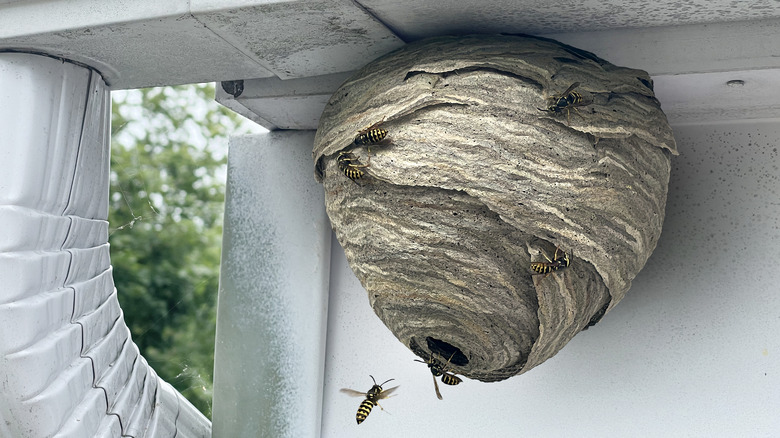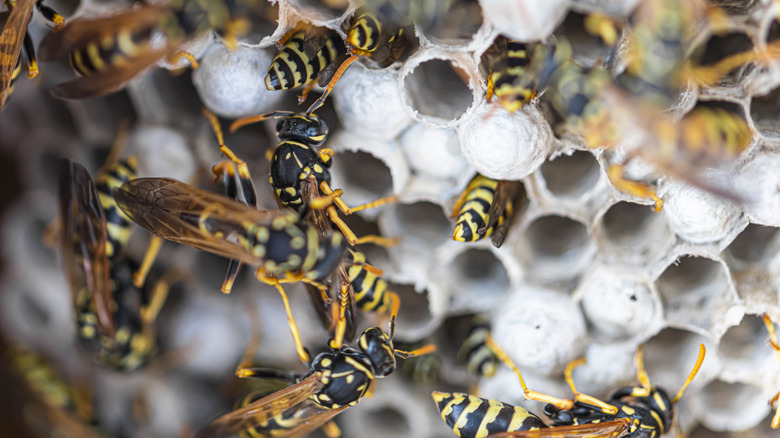You Already Have The Perfect Tool To Remove A Wasp's Nest (But Make Sure To Check This First)
Wasps aren't many people's favorite insect, but they can actually do a lot of good. Some pollinate flowers and vegetables, while others help control aphids, caterpillars, and other garden pests. Okay, you don't want yellowjackets around when you're having lunch on the deck or where the kids are playing, but the eco-friendly among us will certainly find it useful to know which of the common wasps in the garden are harmless and which need to be dealt with.
A wasp nest attached to the house or a much-used shed is understandably something you'll want to remove. Some people will reach for a commercial wasp spray, but these are usually poisonous — not just to the wasp, but also to people and pets. There are a bunch of ways to get rid of wasps without resorting to toxic chemicals, so for many, this will be a last resort.
In fact, you already have the perfect tool for removing a wasp's nest. Actually, you probably own several. Any long-handled shovel, rake, or brush should do it, but there's one vital check you need to carry out first: you need to make sure the nest is empty, or close to it. The last thing you want is an angry swarm attacking you. You should never kill a wasp near the nest either, because the last thing the creature does is release a pheromone alarm, calling the rest of the nest to battle!
How and when to deal with a wasp's nest safely
In the fall, the entire wasp colony will die, with the exception of the queen, who will go and hibernate in something like a hole in brickwork or in an old log. This is the perfect time to remove the nest, and it shouldn't take a lot of effort. If you need a ladder to reach it, it's a good idea to have someone hold the bottom. If you absolutely must remove a wasp's nest before the fall, it's probably a good idea to call a pest control specialist.
Interestingly, wasps seldom return to the same place when they build a new nest the following year. Unfortunately, when the queen emerges in the spring, she's going to start one somewhere, so you need to be vigilant. There are a number of sneaky spots where wasps could build their nests, and it's best to deal with the problem before it gets too big. Early on, when she's just starting a new colony, you may be able to use a spade or rake to remove the nest again, but it could soon become dangerous to do so.
Prevention is better than cure, and it's worth investigating ways to stop wasps from setting up home in the first place. For example, there are numerous flowers and herbs that will deter them. Many essential oils have the same effect. So although wasps can sometimes be a nuisance, there are plenty of eco-friendly solutions.

